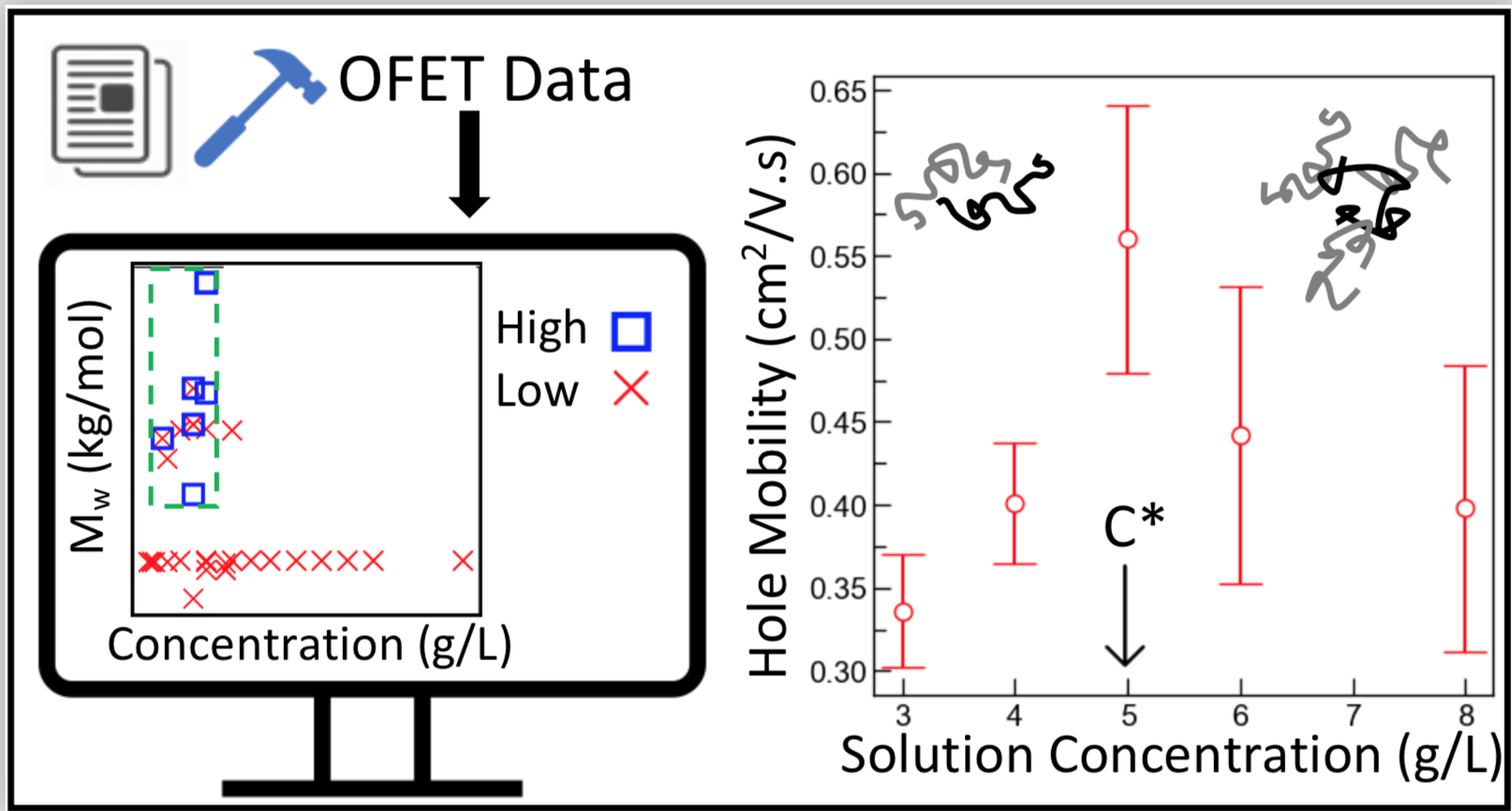(559g) Data Science Guided Experiments Identify Conjugated Polymer Solution Concentration As a Key Parameter in Organic Field Effect Transistor Device Performance
AIChE Annual Meeting
2022
2022 Annual Meeting
Materials Engineering and Sciences Division
Materials and Devices: From Energy Generation to Efficient Usage (Co-sponsored with Material Interfaces as Energy Solutions)
Wednesday, November 16, 2022 - 5:15pm to 5:30pm
Organic semiconducting polymers have demonstrated potential in the production of large-area, low-cost, flexible electronic devices. Recently discovered push−pull copolymers (donor−acceptor (D−A) polymers), with a polymer backbone consisting of alternating electron-deficient (acceptor) and electron-rich (donor) units, have exhibited significant improvement in electronic performance compared to semicrystalline homopolymers. The high charge carrier mobility observed in D−A polymers has been attributed to the rigid, planar backbone conformation with minimal steric hindrance between the donor and acceptor units. However, the vast and complex device processing space combined with a lack of standardized reporting makes reproducibility within the field difficult and impedes the development of these materials. Curating and analyzing centralized datasets is a promising approach to resolve the issue of reproducibility, gain new insights, and guide future experiments. Here, a data set was constructed containing processing and performance information of 115 published organic field effect transistor (OFET) devices, fabricated using the commercially available D-A polymer, DPP-DTT. A customized classification algorithm was applied to the data set, which identified polymer solution concentration as a key processing parameter in OFET device performance. The algorithm recommended a reduced experimental design range for polymer solution concentration that would potentially result in higher OFET hole mobilities as compared to devices fabricated outside this design range. Experiments performed to confirm the insights from the data curation exercise revealed a strong influence of solution concentration on the polymer chain interactions and electronic performance. Based on the recommendations of the classification algorithm and insights from supporting experiments, OFET devices were fabricated at the critical polymer chain overlap concentration of 5 g/L in chlorobenzene, which resulted in enhanced hole mobility. It is hypothesized that the polymer chain overlap in the solution state contributes to improved charge transport in the solid state. The results highlight the advantage of integrating materials informatics approaches into the existing polymer electronics methodologies.


